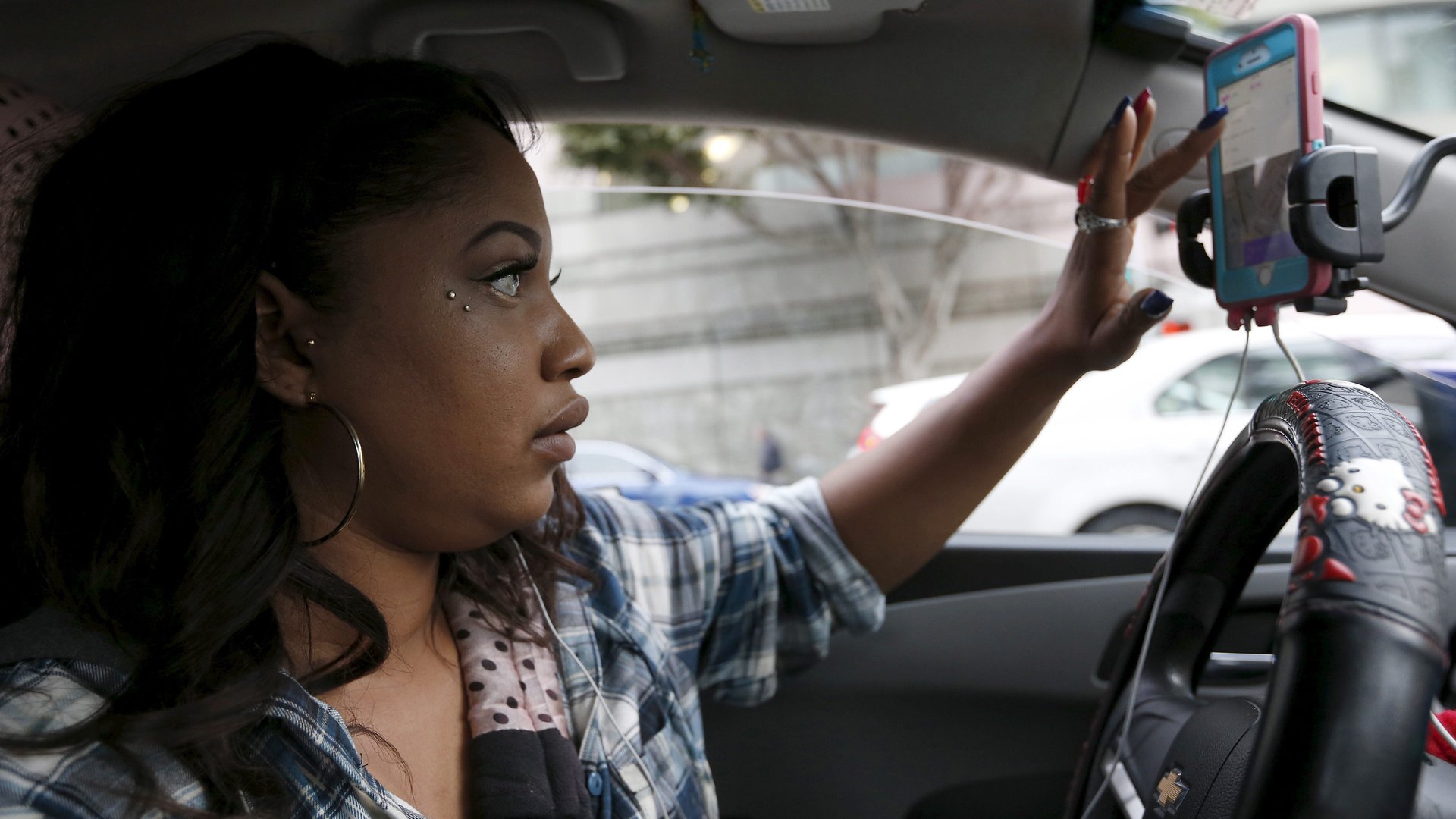Lyft’s efforts to take on Uber in 2017 are already coming at the expense of its drivers
In 2016, Lyft crept up on Uber. This year, it’s coming at full speed.


In 2016, Lyft crept up on Uber. This year, it’s coming at full speed.
Lyft went live in 40 new cities and three new states yesterday, the first part of an expansion that will add 100 cities by the end of the year. The last time the company did a rollout of this size was in April 2014, when it added 24 cities in one day to nearly double its US footprint.
Lyft operates in the US only and has been a distant second to Uber since the former was founded in 2012. Last year, Lyft booked 163 million trips total, while Uber booked 78 million US trips in December alone.
But as Uber has turned its attention elsewhere—Latin America, China, India, the rest of East Asia—Lyft has started chipping away at its biggest competitor’s US market share. In 2016 alone, Lyft spent $50 million a month on the effort, largely through coupons for riders and bonuses for drivers.
By late last year, it appeared to be working. In October, a report from research firm 7Park Data found that, since 2014, Lyft had logged annual gains on Uber in 19 of the top 20 American cities for ridership. From the third quarter of 2015 to the third quarter of 2016, 7Park said Lyft’s ridership grew 246%, compared with 200% for Uber. The share of Uber riders ”also using Lyft” also climbed a few percentage points in 2016.
It’s only January, but Lyft already looks poised to reprise that aggression this year. Besides launching dozens of new cities, the company has made several changes to its fare structure to put drivers’ money back into riders’ pockets (or its own). The company has lowered fares in a handful of markets, a net decrease that Lyft pegs at 1% nationally, although ride-hailing blog The Rideshare Guy reported reductions of up to 10% in Orange County, California.
“With the competition offering lower prices, we need to take action … to protect ridership and your long-term earnings,” Lyft told affected drivers this month in a memo titled “Competitive Strategy Update.”
The cuts are being made even as Uber abstains from widespread January fare reductions for the first time in three years. Lyft, which tries to position itself as friendly to drivers, has told them in the past that it lowered winter fares solely to keep pace with the competition.
Lyft has also quietly tweaked its commission structure to earn more money from cancellations. A Jan. 18 update to driver terms and conditions reviewed by Quartz states that Lyft takes a cut of “cancellation charges for all product offerings” and that fees for cancelling a Lyft Line—its UberPool competitor—“may be retained by Lyft in their entirety.” Cancellation fees used to go straight to drivers and the company has yet to update its “How Your Pay Is Calculated” web page to reflect this change. That explanation, dated July 26, still tells drivers that Lyft “does not take any commission” on fees for cancelled rides.
Ride-hailing is a high-volume, thin-margin business, making even tiny changes to cost structure significant. Lyft used to send new customers credit for a free ride as soon as they downloaded the app. Last year, it began waiting a few days to offer the promotion, a tweak that The Information reported was expected to save the company tens of millions of dollars a year. The Information also reported that Lyft narrowed its losses on individual rides by 30% in the second half of 2016, helping growth in revenue to exceed growth in rides.
Money also isn’t everything. Lyft has far less cash on hand than Uber—$2 billion in total funding, compared with $13 billion—but is arguably better positioned to mount a targeted offense in the US. In addition to being stretched thin geographically, Uber is investing heavily in its food-delivery product, UberEats; battling regulators on self-driving cars; and dabbling in an even more radical visions for flying cars. Lyft is also working toward autonomous vehicles in partnership with GM and may expand abroad in 2017, but on the whole its other bets are looking a lot less audacious.